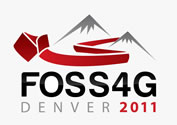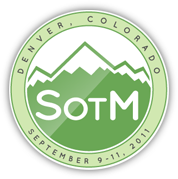Dynamic Earth in GRASS7
Session Type:
Academic Session
Presenter(s):
Dr Helena Mitasova, North Carolina State University
Eric Hardin
Recent advances in remote sensing technologies provide greatly enhanced capabilities to gather 2D and 3D data for large areas at unprecedented spatio-temporal resolutions. These data provide unique insights into various aspects of Earth dynamics from erosion, landslides, and coastal evolution to vegetation growth, pollution, and land development. These data also offer a unique opportunity to improve the spatial and temporal accuracy of process-based simulations, by providing high resolution representation of modeled phenomena.
Within the OSGeo software stack, GRASS has a long tradition of supporting multi-temporal data analysis and dynamic surface modeling even though time series data management is still rather limited. The significant redesign of GRASS7 provides opportunities to develop a new generation of capabilities that reflects state of the art monitoring and modeling technology. This includes processing of massive data sets including time series of LiDAR point clouds, robust algorithms for feature extraction and simulations that can handle complex, noisy surfaces, as well as flexible integrated 2D and 3D visualization. We provide an overview of the current status of GRASS tools that support analysis and modeling of Earth dynamics based on observations and process-based simulations, including recent enhancements and on-going development of new or updated modules and add-ons. We explore the use of space-time cube concept for multi-temporal data management, analysis of evolution gradients and a broad range of related visualization approaches from animations to isosurfaces and 3D gradients. We will also discuss the major gaps in the capabilities and identify efforts to fill these gaps.
Several case studies will be used to demonstrate the presented methods and tools at different scales including the space-time cube applications and dynamic simulations. The examples are based on time series of airborne and terrestrial LiDAR surveys that capture land surface dynamics due to ocean wave action, wind transport and surface water flow.
Speaker Bio:
Helena Mitasova is Associate Professor at the Department of Marine, Earth and Atmospheric Sciences, North Carolina State University and a member of GRASS project steering committee.
Schedule info
Time slot:
Thu, 09/15/2011 - 10:30am - 11:00am
Room:
Spruce 










